May 17th, 2009 by Marc AuMarc
This morning we took a taxi back to the San Pedro Sula airport, passing horse-drawn carts filled with fruit,
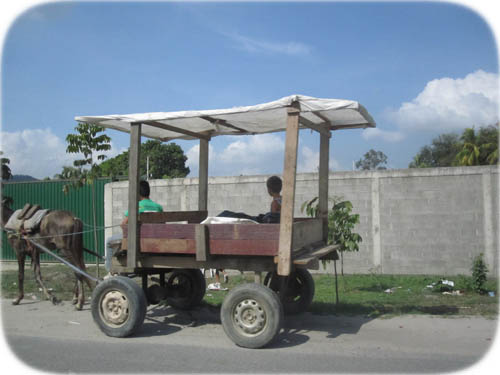
an old airplane with sweet WWII Flying Tigers-style nose art,
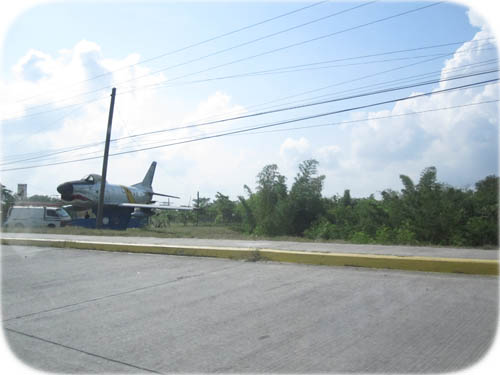
and a billboard for what appears to be the awesomest educational facility ever: the Albert Einstein International School (“Where imagination is stronger than knowledge”).

An interesting observation: apparently here cacti, rather than tree trunks, are the hot spots for carving one’s name.
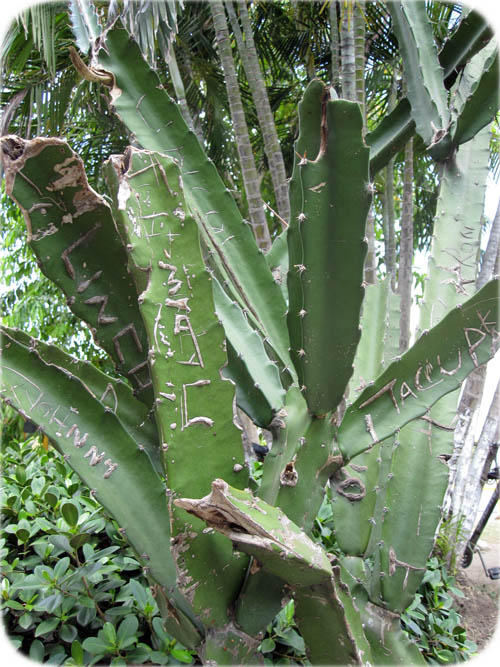
We hopped on a tiny plane and flew directly to Roatan,
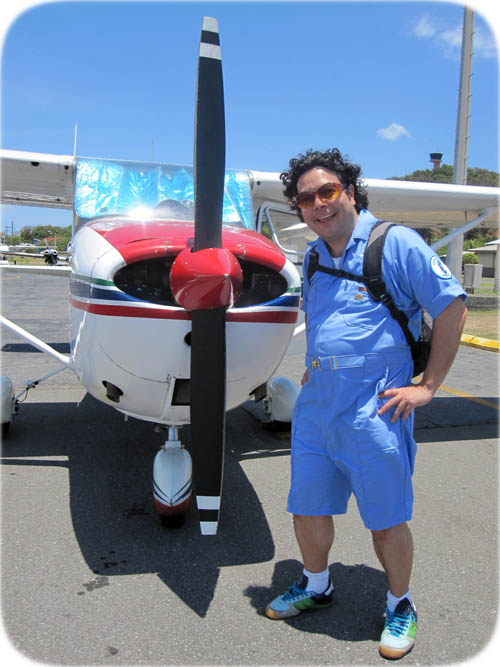
where we cabbed it to the West End. In 15 minutes flat we checked into our hotel, set up our camera gear and dive equipment, and hustled to Coconut Tree Divers just in time for the 1 pm dive at Fish Den.
There we spotted a turtle, many Black Durgeon, a big grouper, three little arrow crabs, and a rad brittle star clinging to a coral.
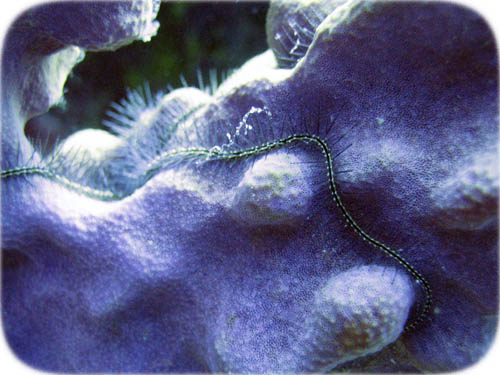
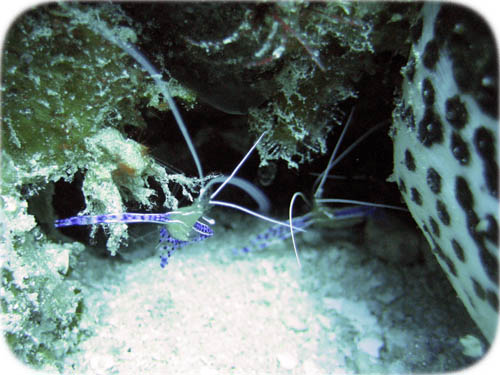
Our 2:30 pm site was Half Moon Bay Wall/Divermaster’s Choice, where we found a little cleaning station manned by a couple of Pederson Cleaning Shrimp, some cool coral, a beautiful French Angelfish, and a Queen Angelfish.
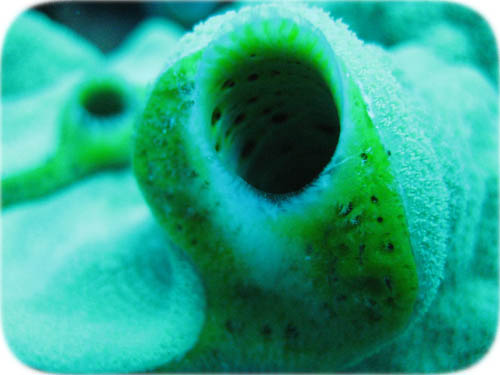
We watched the sunset from the dock with our friends from Coconut Tree, and ended the evening with drinks at Sundowner’s and some local pizza.
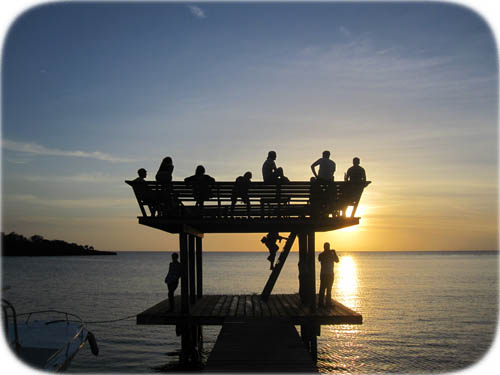
Posted in blog, Fruits Gear, Marine Ecology, On Expedition
Comment on this post.
February 20th, 2009 by Marc AuMarc
Artificial reefs are man made structures placed underwater to promote reef formation. There are many kinds of artificial reef, ships being perhaps one of the most common, either inadvertently shipwrecked, or deliberately sunken after being cleaned and towed to the desired site. Artificial reefs are also made from cars, and retired subway cars.
Artificial reefs provide a substrate upon which corals, sponges and mollusks can grow. For example, this rudder has been encrusted with a variety of growth:
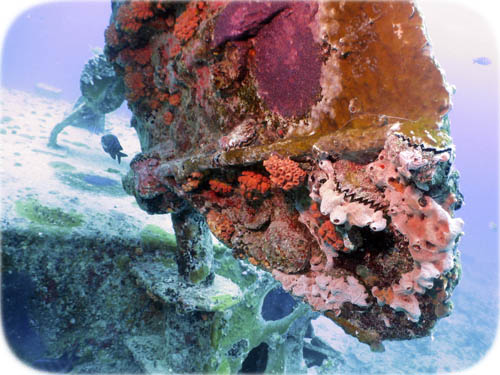
Artificial reefs also provide shelter for a variety of fish species. The structure provides shelter from predators, much like the recesses and crannies in a natural reef:
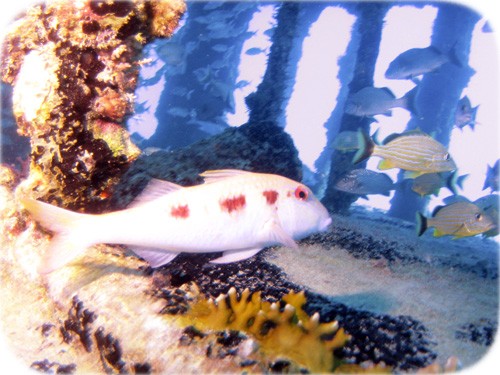
Concrete is a popular artificial reef material because it is inexpensive, and provides a good substrate for coral growth. In the photo below, J.P. (The Lion of the Sea) is adjusting starter coral attached to a small concrete artificial reef substrate. Notice that the structure has holes to allow the flow of water, otherwise it would be destroyed by the surge. As it turns out, this artificial reef structure was destroyed, most likely because, at 25 feet, it was not protected enough from the waves, tides and surge.
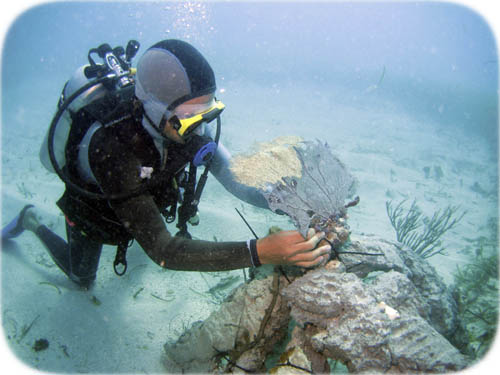
Below is a photo of a number of concrete reef pods near the wreck of the Ro/Ro off the coast of Sint Maarten. While you can see growth on these pods, coral and other reef-building organisms take time to become established.
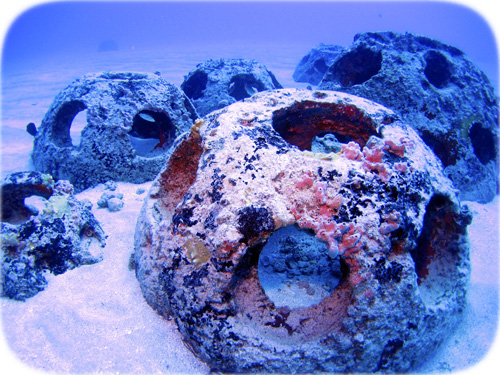
Chris and Sally from Octopus Diving and Snorkeling in St. Martin hope to start artificial reef programs on the French side of the island, hopefully using grants or sponsorships to cover the cost of creating and deploying the pods. Sponsors may even be able to have a plaque on their undersea pod commemorating their contribution! We’ll let you know as plans unfold.
Tags: artificial reef, diving, Marine Ecology, reef pods, underwater
Posted in Marine Ecology
Comment on this post.













